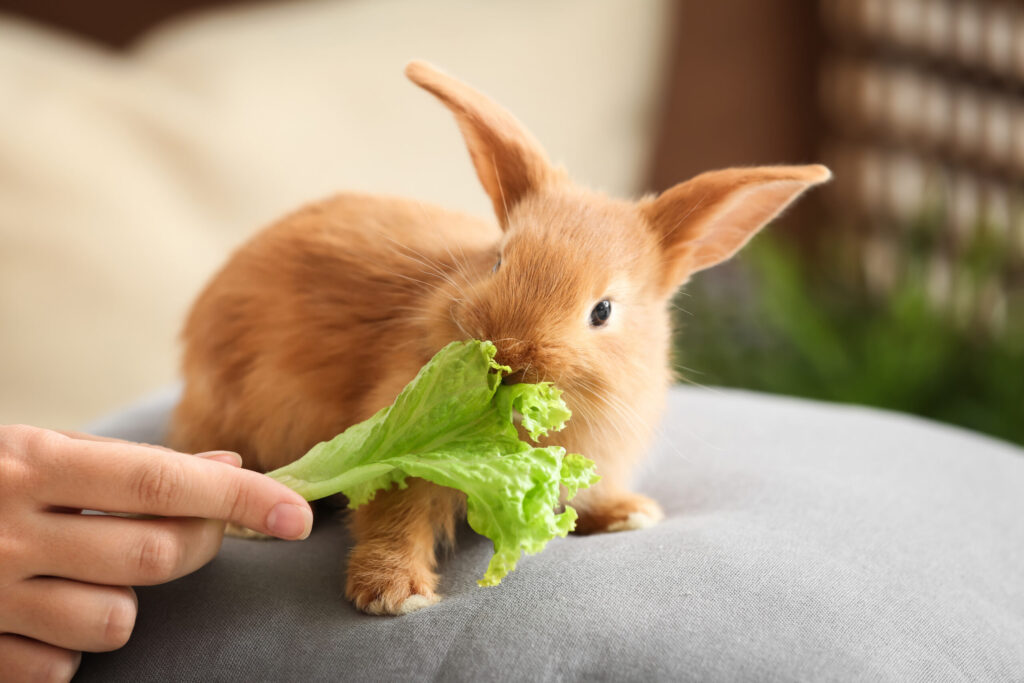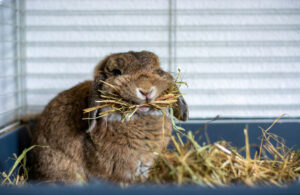Welcoming a baby rabbit into your home is an exciting moment—but it also comes with a lot of responsibility, especially when it comes to feeding. Baby bunnies have very specific nutritional needs that change as they grow. Feeding them the wrong foods (or the right foods at the wrong time) can lead to health issues, digestive trouble, or worse.
At PetRabbitSupplies.com, we care deeply about your bunny’s well-being. That’s why we’ve put together this easy-to-follow feeding guide for baby rabbits, so you can feel confident you’re giving your furry friend the best start in life.
Stage 1: Newborn to 3 Weeks — Mother’s Milk Is Everything
In the wild, baby rabbits (also called kits) rely entirely on their mother’s milk for the first few weeks. If your baby bunny is orphaned or separated from the mother, you’ll need to provide a rabbit-safe milk replacer like Kitten Milk Replacer (KMR) or Goat Milk, with guidance from a vet or rabbit rescue expert.
Scientific Insight:
A study published in the Journal of Animal Science found that kits raised by does with optimized diets had improved early growth and reduced mortality after weaning—showing just how critical proper early nutrition is to a baby bunny’s long-term health (PubMed).
Frequency:
- Feed 2–3 times per day, based on your vet’s recommendations.
Stage 2: 3–7 Weeks — Introducing Hay & Pellets (Slowly)
At around 3 weeks, baby rabbits start nibbling on solid food while still nursing. This is when you can begin introducing high-quality alfalfa hay and pellets made specifically for young rabbits.
What to Offer:
- Alfalfa Hay: Rich in calcium and protein to support growth.
- Baby Rabbit Pellets: Choose pellets with no added seeds, nuts, or colorful bits.
Still nursing? Yes, they should still have access to mother’s milk or a substitute until at least 6–8 weeks of age.
Stage 3: 7–12 Weeks — Gradual Introduction of Fresh Greens
This is the stage where many rabbit owners get too excited and introduce leafy greens too fast. Baby bunnies have delicate digestive systems, so it’s best to go slow.
Safe First Greens:
- Romaine lettuce
- Parsley
- Cilantro
- Dandelion greens (from unsprayed areas only)
Stage 4: 12 Weeks and Beyond — Expanding the Diet
Once your rabbit is 12 weeks old and tolerating greens well, you can gradually increase variety and portion sizes. Continue with alfalfa hay and pellets for a few more weeks, then start transitioning to timothy hay around 4–6 months.
Daily Diet Breakdown:
- Hay (unlimited): Start switching from alfalfa to timothy or orchard grass.
- Pellets: Still an important source of nutrients—but avoid overfeeding.
- Greens: Up to 1 cup per 2 lbs of body weight per day.
- Fresh Water: Always available, changed daily.
Common Feeding Mistakes to Avoid
- Skipping hay – Hay is crucial for digestion and dental health.
- Overfeeding pellets – Too many pellets can cause obesity and gut problems.
- Introducing veggies too fast – Baby tummies are sensitive!
- Feeding unsafe foods – No iceberg lettuce, onions, chocolate, or human snacks.
Final Thoughts: Every Bunny Deserves a Healthy Start
Feeding a baby rabbit properly sets the foundation for a long, healthy, and happy life. Remember that patience and gradual transitions are key. Every bunny is different, so pay close attention to your rabbit’s behavior, energy, and litter box habits to know if their diet is working.
Need the right supplies to get started? Visit PetRabbitSupplies.com Shop for vet-approved rabbit pellets, premium hay, feeding bottles, and more.




